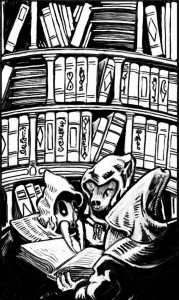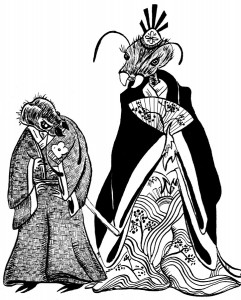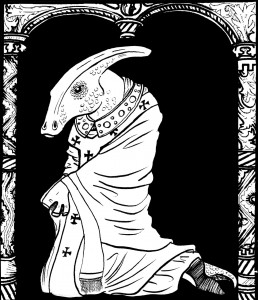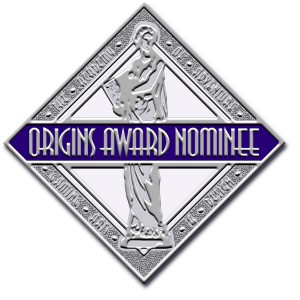by Steve Speyer
Each player has a specific Realm with a specific set of attributes (geographic, historical, demographic, religious, and social) that change through time as the player makes the region his or her own. Nothing is set in stone; but most things have consequences – good, bad, and mixed.
Each Realm comprises a number of individual regions, each of which to a greater or lesser degree has an identity that may have existing historical or future historical significance. Each region has a particular level of affinity with the empire; friendly, allied, tributary, etc. The greater the affinity, the more regional resources are afforded to the Realm.
Each Realm has a number of “Leaders” that may be Allied (for Allied regions) or national. The Leaders are the moving pieces on the board; they move the armies, they conduct the business of diplomacy, intelligence, and religious spell casting.The capabilities of the Leaders are summarized in three numbered attributes, which relate directly to the success of the operation/action; military, diplomacy, or sorcery. These range from a low below 5 and a high in excess of 9.
Each Realm has a number of attributes and characteristics that have developed to date over the history of the government and the population:
Army attributes: These are quality ratings that increase at the expense of resources over the turning of time. You make specific decisions to invest and a probability matrix calculates the chance of increase and then determines if, in fact, a rating has increased. The more invested, the greater chance of increase; the over chance decreases per unit investment as the rating increases (e.g., it is less expensive overall to increase a rating from 2 to 3 then it is to increase from 7 to 8).
- Calvary (C)
- Infantry (I)
- Navy (N)
- Airship (A)
- Siege (S) – both attacking and defending
Governmental Attributes: Quality ratings that, like army ratings, increase due to investments.
Bureaucracy (BL) – ability to control outlying regions; the depth and the effectiveness of the government
Intelligence Rating (IR) – ability to infiltrate, defend against infiltration, spy, assassinate, initiate terroristic effects, counter terroristic effects, etc. The number and the effectiveness of individual intelligence operations are affected by the IR.
Certain Realms have an additional status within the Imperial infrastructure that presents additional opportunities, responsibilities, benefits, and restrictions; cf. Electoral States.
Religious Attributes: Ratings and attributes that are related exclusively to the religion of the Realm.
National Sorcery Rating (NSR) – the effectiveness of magic, magical effects, and other similar religious influences initiated by the Realm.
Religious Strength (RS) – generally a reflection of the zeal and the passion with which the typical inhabitant pursues the national religion. Jihadist RS will be great (RS 8 or higher). Typical Realms are normal (about RS 4). Religious Orders (some of which are Primacies) will tend to be greater (RS 6 or so).
Resources: There are four regional resource attributes.
- Gold – money resources
- NFP – population pool
- Arms – production of weaponry and armaments
- Mana – magical energy
These are added up (with some other sources) to provide your Realm with the basic resources it will spend on a turn-by-turn basis.
Kindreds: There are three major “Kindreds” or races.
Malebolge (M) – These insect-like sentients dominate western Sahûl. Malebolge society typically retains many features of hive structure: they are absolutely monarchist, matriarchal, and matrilinear; they maintain rigid castes and demonstrate a fierce loyalty to those they serve.Saurian (S) – The oldest of the Kindreds, Saurians dominate the southeast and central regions. They are descended from herbivorous, hollow-crested hadrosaurs similar to Parasaurolophus. Saurians believe strongly in tradition and any new innovation is likely to be justified using past precedent, no matter how obscure.
Wenemet (W) – Wenemet are omnivorous furry bipedal marsupials. They are both the tallest and broadest of the Kindreds. Wenemet society is supported by two pillars usually summed up as “clan and cloth.” Clan organization is so important to the Wenemet that their names include their clan and family names before their given name. “Clothes make the man” – Wenemet typically wear their wealth, and they firmly believe that one can judge by appearances.
(Kindred explanations are summarized from the rule book).
Religion: There are four basic religions, which affect the world through magical effects.
- Iluvar – Good: Community and kindness
- Tarot – Chaos: Luck and fate
- Urda – Order: Nature and natural influences
- Yagnar – Evil: Power and oppresson
Each of these have specific spheres of power and influence that are reflected in diversity of spells and spell effects that are brought about in the expense of mana.
The map illustrates the location and extent of the Realms at Turn 0, which is the start condition. Wars, espionage, trade, revenue, etc. are mechanically assessed by probabilities related to applicable quality ratings detailed above. You make the decision and the computer spits out the answer, and Thom interprets the answer into a monologue that is printed in the Turn Newsletter or as special, privileged information provided in your unique turn sheet.
Higher profile happenings and developments are more likely to appear in the Newsletter than will less significant things. Failed espionage ops may well make their way into embarrassing common knowledge.Successful espionage ops will not (unless, of course, someone has specifically countered your efforts with their Realm’s IR ops).
The interaction and exchange between players is encouraged (as if it could be controlled anyway). The Cruenti Dei Forum has been set up to support exactly this sort of interaction; either at a private or a community level.
In my opinion, Thom runs a very efficient and provoking game that is challenging from the standpoint of interest, intrigue, adventure, and mystery. The history of the world is important to Thom, and this importance translates into surprising and rewarding nuances. Of course, the actions and interactions of the players is the unknown element of the world, which makes it like a complex, multi-dimensional Risk sort of game.
Although I imagine that there might be some sort of end game scenario, for my money I am interested in running a Realm through any and all obstacles, circumstances, and situations (player or game instigated) as though these are the real McCoy (i.e., not available for complaint or negotiation with the world master; i.e., Thom).
Stuff happens and how I respond to the “stuff” makes or breaks my integrity in terms of game play… and ultimately ends up giving me the greatest amount of satisfaction. In other words: It is what it is; what are you going to do now?






